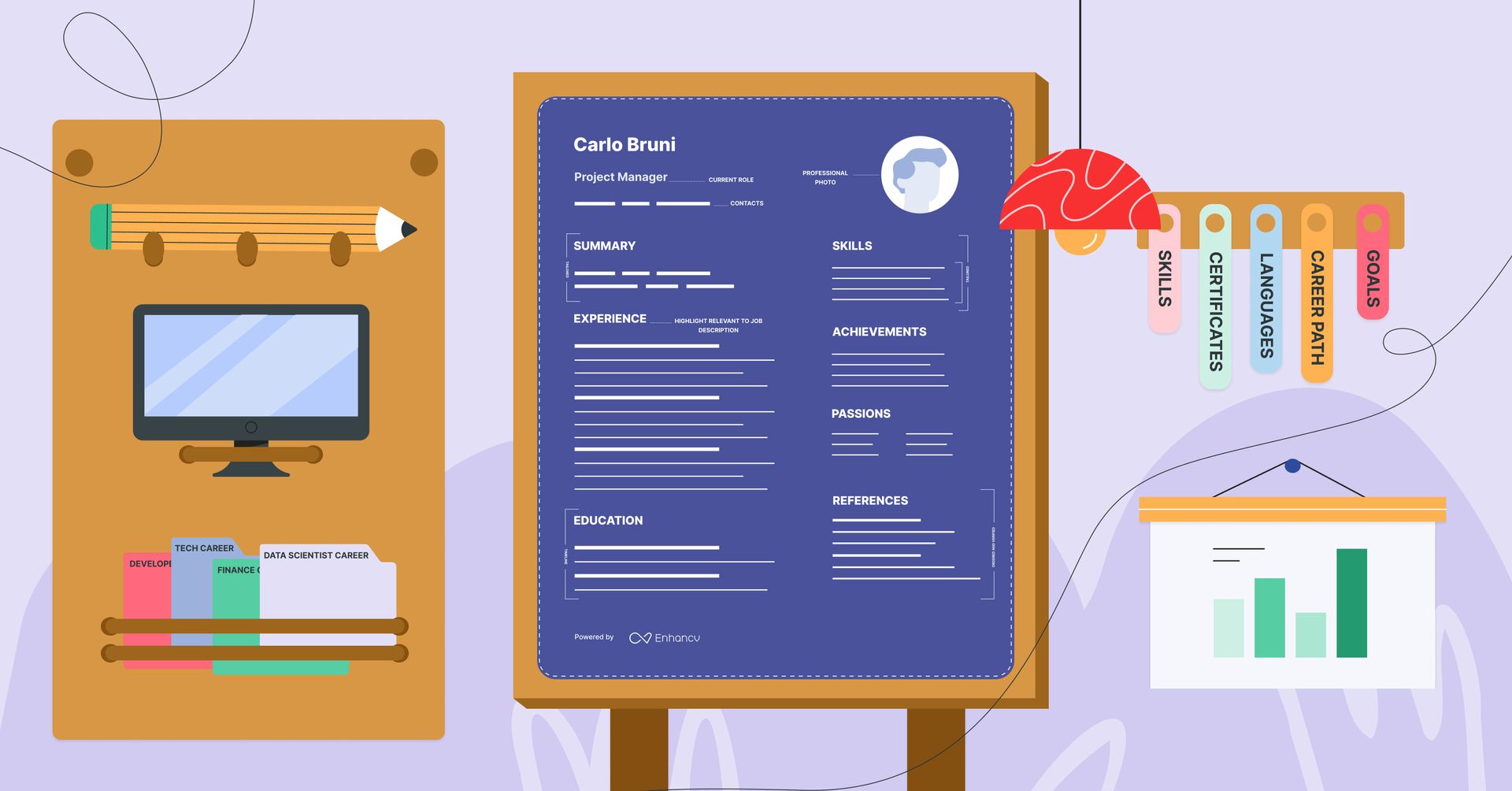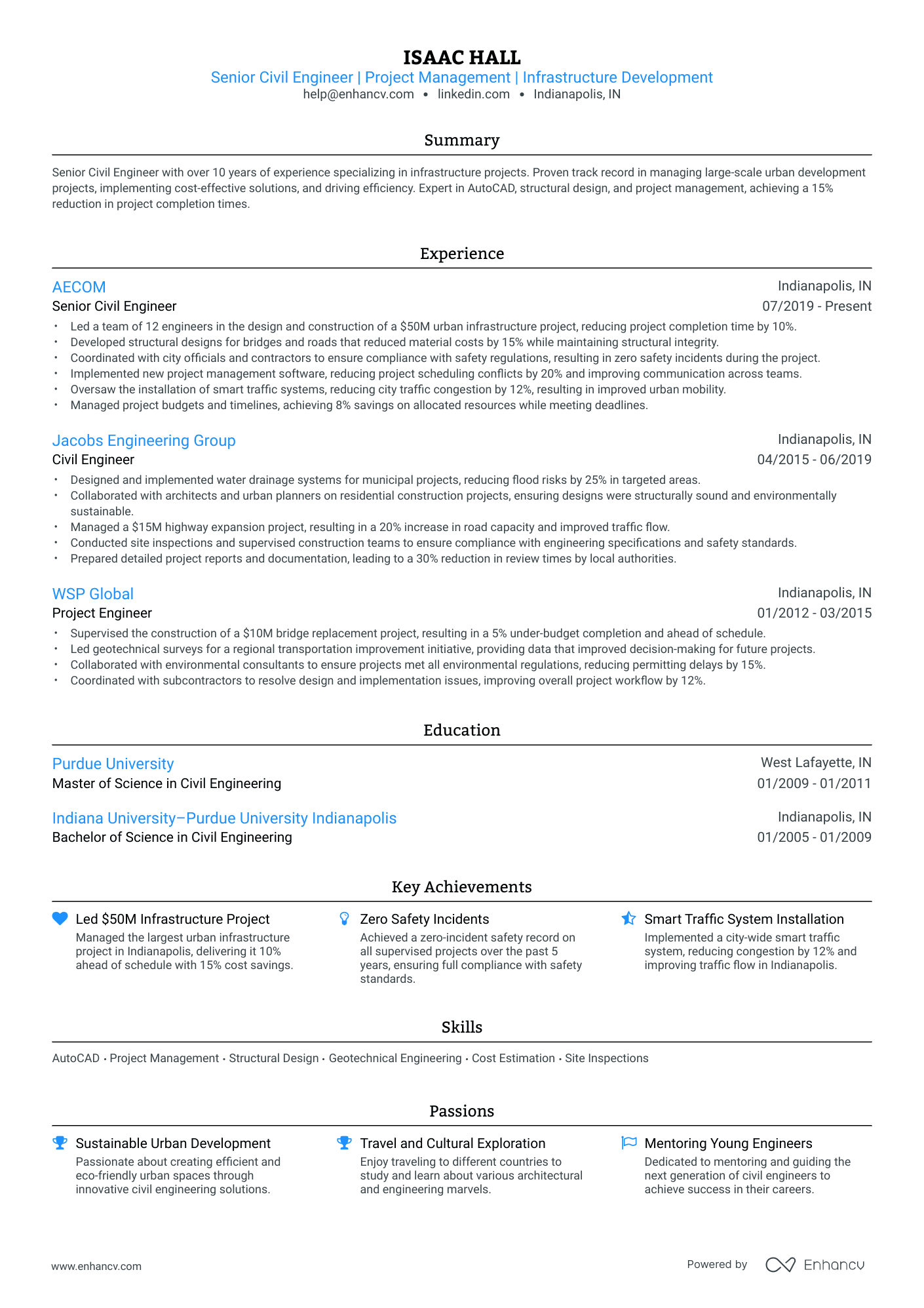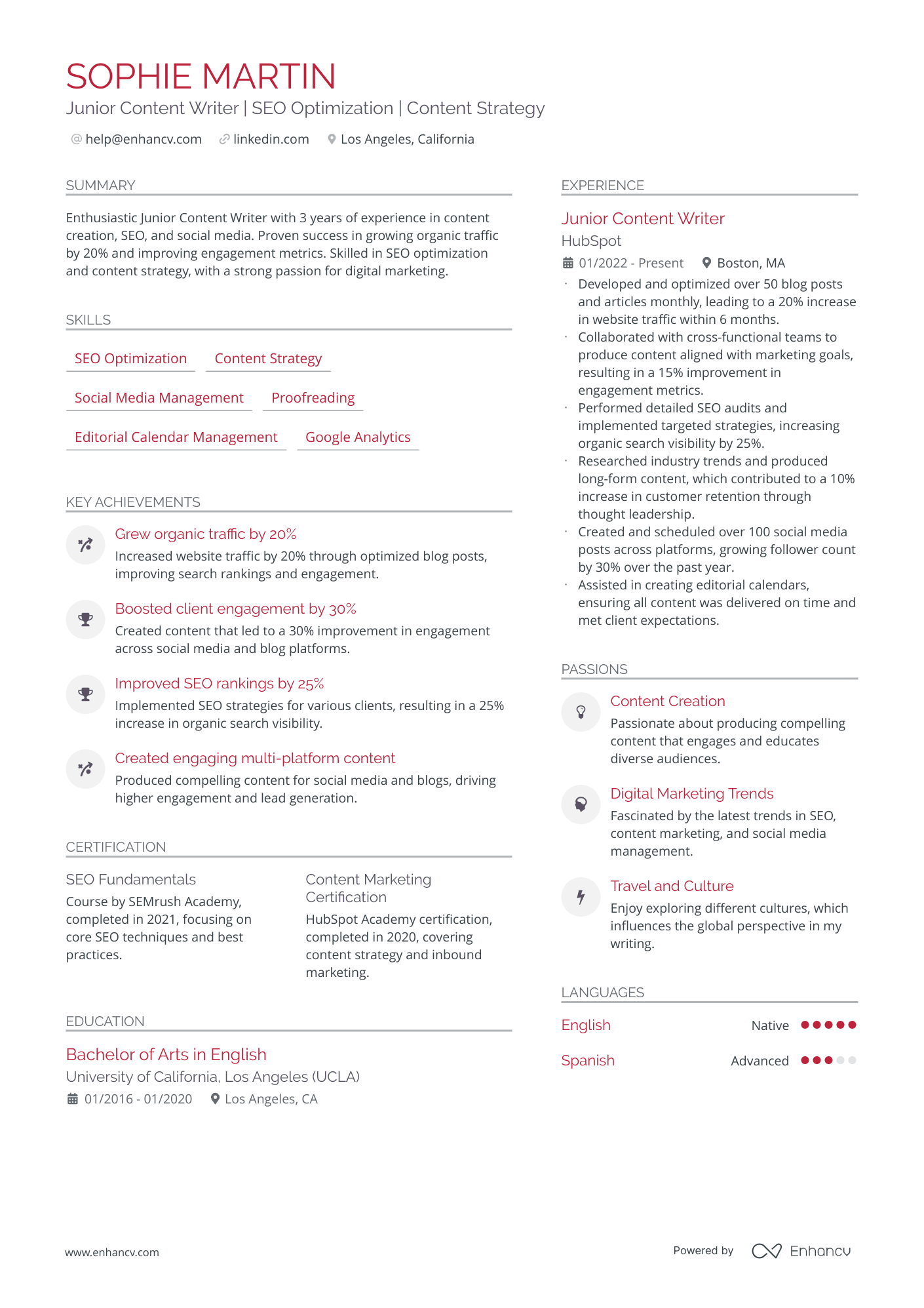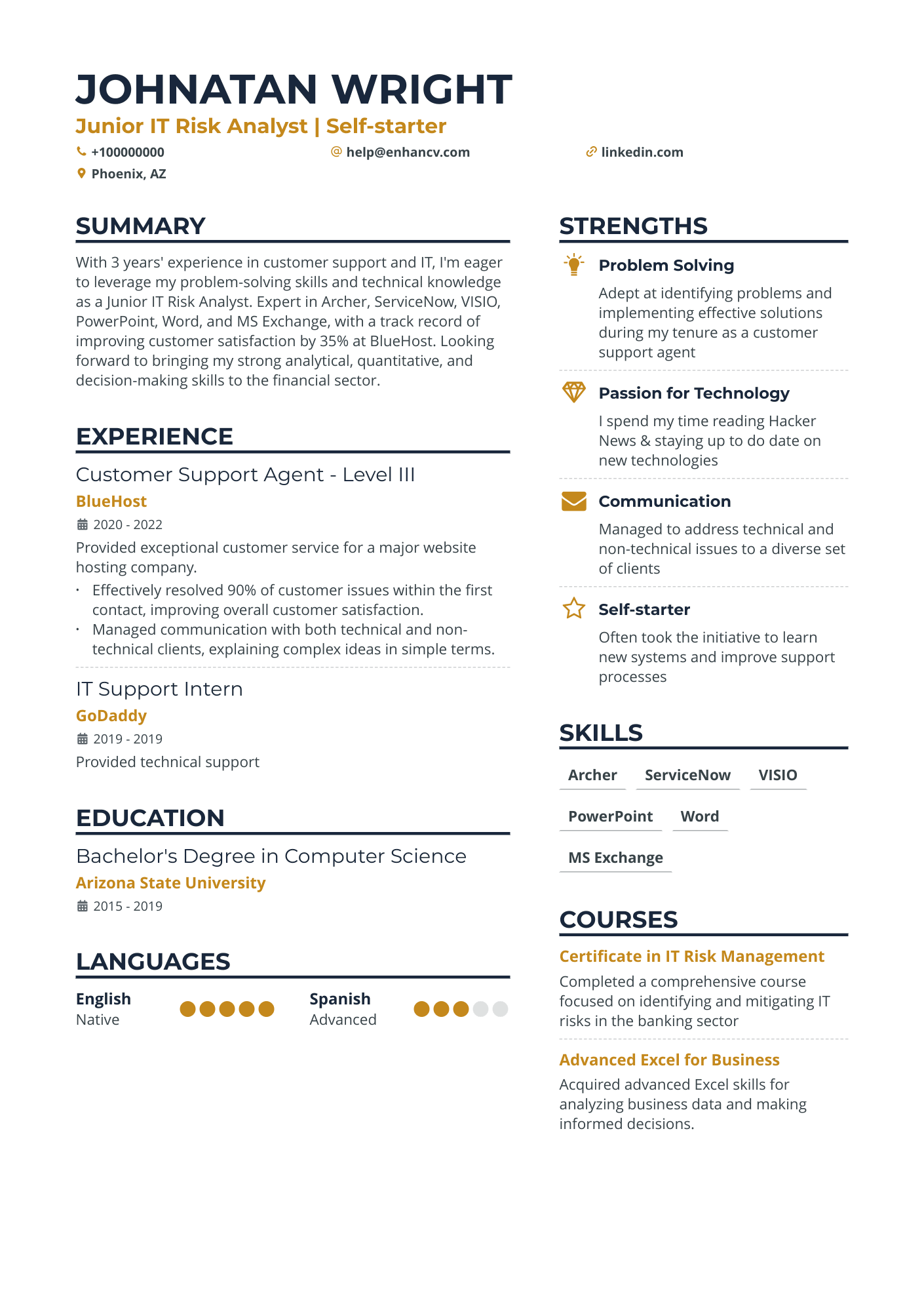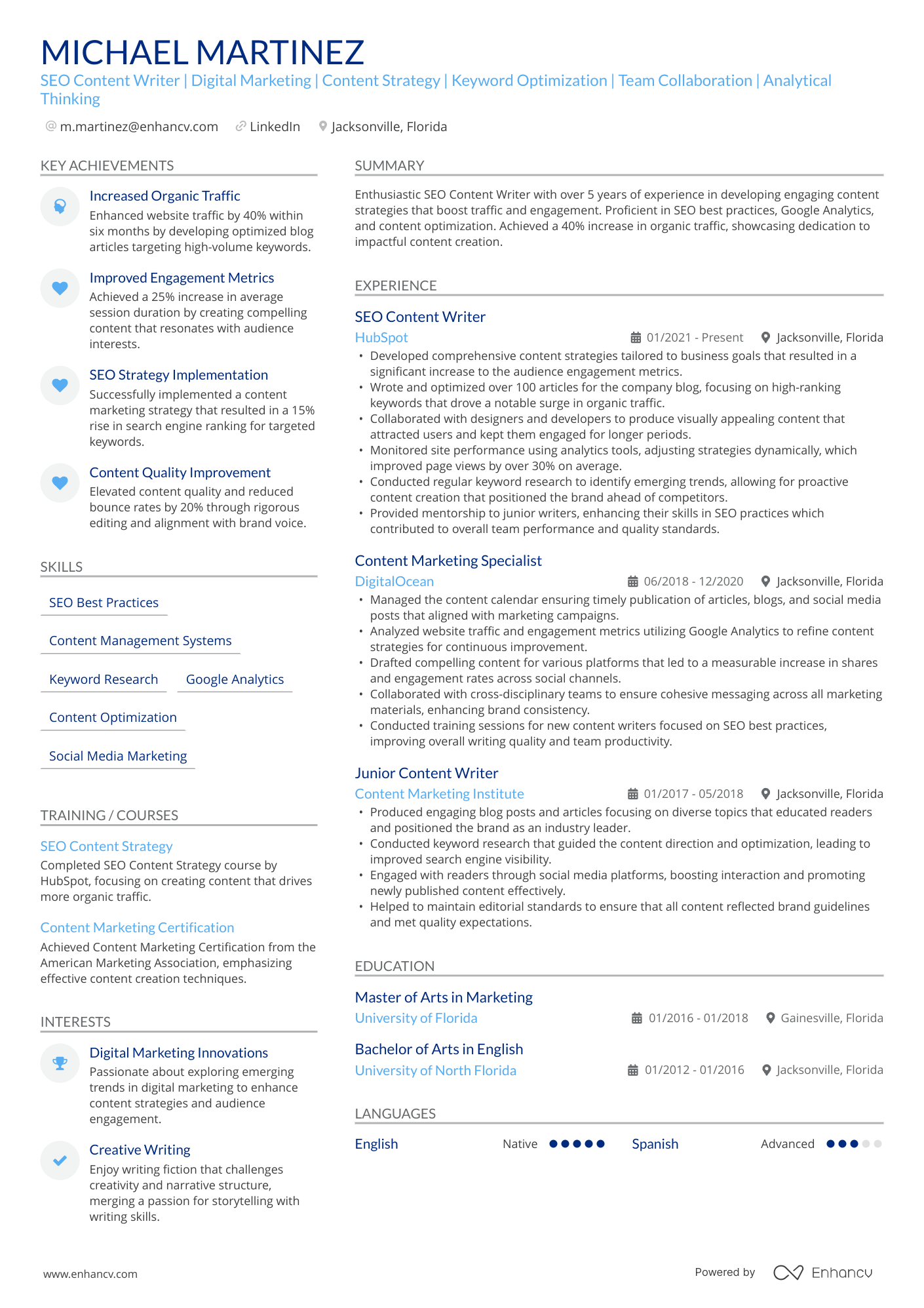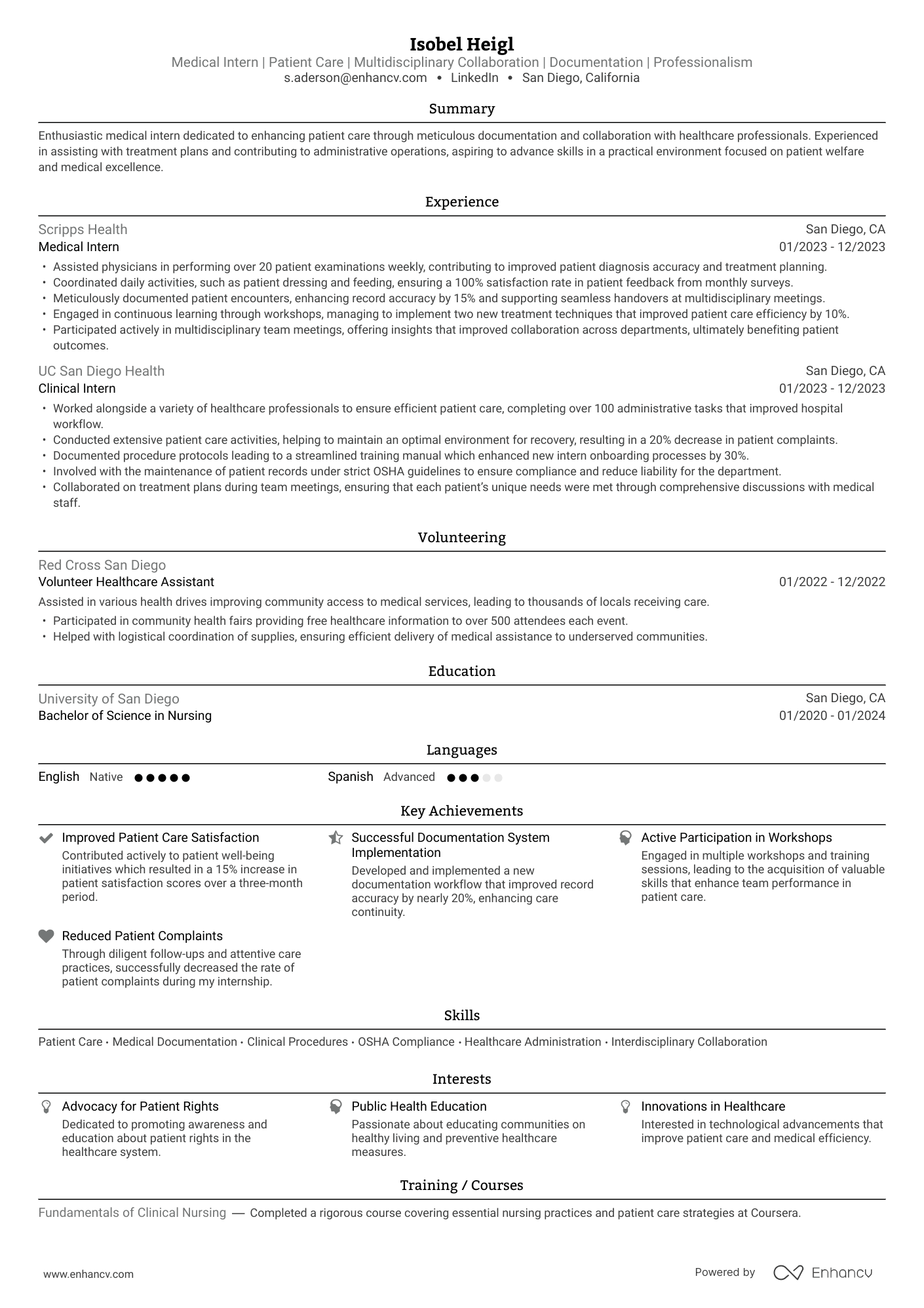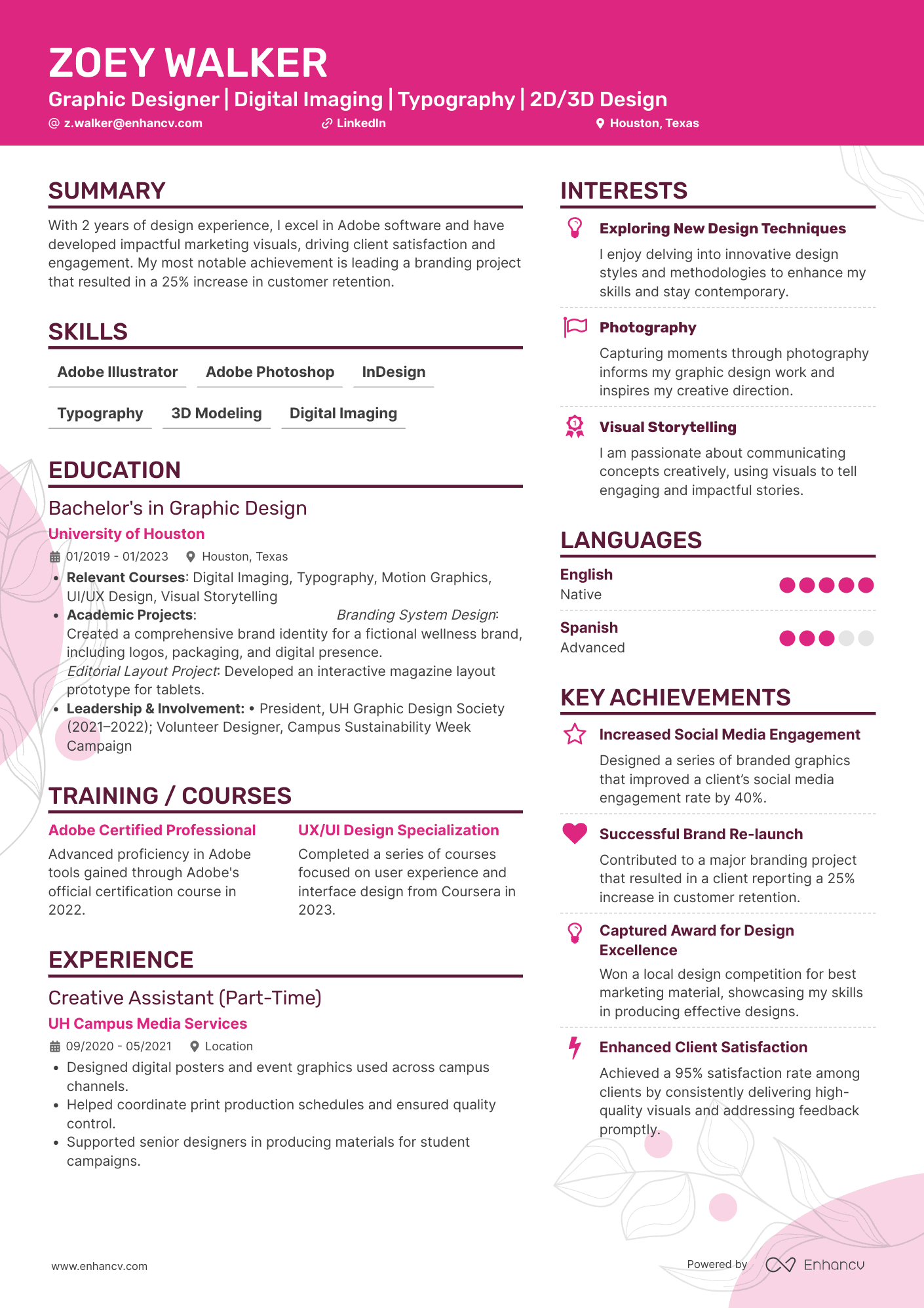Whether you're just starting out or have years of experience, writing a resume can feel overwhelming. The best way to begin? Go back to the basics.
A resume isn’t just a list of jobs—it’s your ticket to interviews and job offers. And with 70% of large companies using applicant tracking systems (ATS) to filter resumes, tailoring yours to the job posting is crucial.
This guide is here to help all kinds of job seekers—graduates, career changers, those reentering the workforce, people with gaps, and international applicants—overcome common hurdles. We’ll cover content choices, ATS tips, and how to showcase your strengths effectively.
Key takeaways
- A resume is a tailored document that highlights your qualifications for a specific job.
- It should include essential sections like contact info, profile, experience, education, and skills.
- Tailoring your resume with keywords from the job description improves your chances with ATS.
- Choose the right format—chronological, functional, or hybrid—based on your experience.
- Add sections like projects, certifications, or languages to strengthen your resume when relevant.
- Keep it clear, focused, and professional—ideally one page, and always save it as a PDF.
What is a resume
A resume is a formal document that a job applicant creates to itemize their qualifications for a position. It usually includes work experience, education, skills and any other relevant information you want to share with your future employer.
It makes you look professional and presentable and shows you’ve dedicated time and effort to the application process. It’s like an advertisement whose sole purpose is to sell your expertise!
Resume vs. CV
| Feature | Resume | CV |
|---|---|---|
| Length | One to two pages | Unlimited length (within reason)—could be three-four-five pages |
| Purpose | Tailored to a specific job | Complete record of career and academic history |
| Focus | Relevant skills, experience, and results | Comprehensive detail, including all achievements |
| Customization | Customized per job | Usually static |
| Usage | Common in the US and Canada | Common in Europe, Asia, Africa, and academia |
| Includes | Experience, skills, summary, education | Publications, teaching, research, awards, etc. |
| Target users | Job seekers across industries | Academics, researchers, medical professionals |
Do I really need a resume?
After all, there’s networking, social media, LinkedIn, and portfolios. Does anybody even have the time to read a resume these days?
All valid points—yet resumes still matter.
While LinkedIn shows your professional story, it lacks the structure and clarity of a resume. Networking might open doors, but a resume seals the deal. And even the most stunning portfolio doesn’t replace a clear summary of your experience and achievements.
Bottom line: A strong resume remains essential. In most cases, it’s not about choosing one tool—it’s about using them all together.
Now that we know what a resume is, let’s see some examples.
Resume examples
Here’s an overview of the most common resume types and when to use them:
Reverse-chronological resume
The reverse-chronological format is the most popular one out there. It’s suitable for pretty much every job position. This format is mostly experience-oriented listing your work history in order, with the most recent position at the top.
Functional resume
The functional resume format is mainly focused on your skill set. It’s the perfect choice if you’re looking for your first job or a career change, or if you’re trying to steer the employer’s focus away from a gap in your employment history.
The great thing about the skill-based format is that it groups your abilities in categories and presents them in a great and easy-to-read way.
Hybrid resume
The hybrid resume format combines the best of both worlds. It includes both a reverse chronological work history section and a highly detailed skill section.
It’s mostly used for job positions that require expertise in a variety of fields. The combination resume is also a great choice for people who’re about to switch careers.
Targeted resume
At the beginning of this article, we highlighted that resumes are usually tailored to the specific job application. Even with ample space on your document, you could still tailor it by using keywords mentioned in the job description and arranging information in a way that focuses recruiters’ attention on the most important things.
Entry-level resume
Whether you’re a recent graduate, switching careers, or entering the workforce for the first time, having a well-crafted resume is your first chance to make an impression on employers and show your potential, even if you don’t have much formal work experience.
Unsure about what to include in your entry-level resume? We’ve got you covered! Highlight relevant coursework, internships, volunteer work, school projects, and even extracurricular activities. These experiences demonstrate valuable skills like leadership, teamwork, problem-solving, and communication. Focus on the strengths you’ve gained and how they can apply to the role you’re seeking.
College resume
If you’re currently in college or just graduated, your resume should showcase the skills and experiences you’ve gained during your academic journey. Even without years of work experience, you have plenty to include—think capstone/academic projects, research, extracurriculars, and leadership roles.
Tailor your resume to the role by highlighting transferable skills and aligning your experiences with the job description. A strong college resume proves that you're prepared, capable, and ready to take the next step.
What is the best format for a resume
Let’s review some basic steps in formatting your resume so it looks professional.
- Columns: A one-column design is recommended for entry-level positions, as it can elegantly distract from the lack of much experience, whereas two columns might save space for candidates with richer experience.
- Length and margins: Keep the length short—one page is preferred for most professionals. Consider a two-page resume only if you have at least 10 years of experience. Remember, a resume should be focused, not a collection of all you’ve ever done.
- Keep your margins between 0.5” to 1” to ensure your information is readable.
- Fonts and colors: Choose a legible font, like Rubik, Calibri, or Lato, and keep your text between 10-12 pt in size.
- Despite what you might’ve heard, colors on your resume are never a bad idea. Just stick to a uniform color palette, and make sure the colors accentuate what you want to draw attention to.
- Photos: Generally, photos aren’t required on a resume. Still, for some public-facing roles, like a barista, you might need one. Always check with your job description to be absolutely sure.
- Formatting: Last, but not least, save your resume as a PDF. It’s going to keep all your resume elements in place.
Our AI Resume Checker ensures your document is well-formatted and ATS-friendly.
Is your resume good enough?
Drop your resume here or choose a file. PDF & DOCX only. Max 2MB file size.
What’s in a resume?
Your resume sections can be roughly divided into two categories—essential, and additional. Let’s review them in detail.
Resume header
Situated at the top of your resume, your resume header should feature the essential contact information.
Here’s how to structure it:
- Name: First and last, in a slightly larger font.
- Title or Headline: Use your current role, target job title, or a creative headline (great for entry-level or creative fields).
- Email: Use a professional address—avoid nicknames or casual handles.
- Phone: List a reliable number and double-check for errors.
- LinkedIn/Portfolio: Include links if they’re updated and relevant.
- Location: Add city and state (or country), especially for location-based roles. Mention if you're open to relocation.
When structuring your header, make sure you spell out your information correctly. You don’t want to miss an important email or call just because you mistyped your email address or phone.
Resume profile
Placed just below your header, this short paragraph highlights your career goals and key strengths. Think of it as a focused snapshot—not a personal “About Me.”
Use action verbs (like achieved, designed, improved) to show impact, and include keywords from the job description to boost ATS success. Skip first-person language to keep it professional.
You can choose between a resume summary or a resume objective, depending on your level of experience and needs.
- A resume summary contains three to five sentences that focus on your experience, qualifications, and what you can bring to the company. As it focuses on the past, it’s perfect for experienced candidates.
Salesforce resume summary
Expert Salesforce Administrator with comprehensive experience in integration, implementation, and management of business processes and sales cycles. I bring a strong focus on user empathy and effective communication skills, with a passion for optimizing workflows and improving team efficiency. I am eager to leverage my skills and expertise to contribute meaningfully to your team and help drive company success.
- A resume objective is shorter, up to three sentences, and should outline your abilities and your career goals–as it focuses more on the future. It’s best for entry-level candidates or career changers.
Salesforce resume objective
Recent Business Administration graduate with strong organizational and problem-solving skills, seeking to leverage hands-on experience from internships in operations and customer service. Eager to contribute to a dynamic team while growing in a fast-paced, results-driven environment.
Whichever you choose, tailoring it to the specific job you're applying for is essential. Highlighting the skills or experiences that match the job description shows the employer that you're not only qualified but also focused on their needs.
Work experience and achievements
The experience section of a resume tells your career story so far, demonstrating how your past work makes you qualified for the job you're applying for. It helps employers see your relevant skills, accomplishments, and career growth, giving them insight into how you’ve handled similar responsibilities in the past.
Start with your most recent role and work backward. For each job, include:
- Job title: Your position and level.
- Company & Location: Full name and city.
- Dates: Use month/year (e.g., Mar 2021 – Jun 2023). Use Present if ongoing.
- Key duties & Achievements: Bullet points only. Focus on results, not just tasks.
When creating your experience section, it’s important to avoid writing out generic responsibilities that mean little to recruiters.
Instead, try to engage them with action verbs and quantifiable achievements (that means, numbers and percentages). This instantly grabs attention and motivates hiring managers to keep reading.
- •Developed and executed email campaigns that increased user engagement by 35%.
- •Coordinated product launches with design, content, and sales teams to ensure unified messaging.
- •Created marketing collateral and optimized digital assets for SEO and brand alignment.
- •Analyzed campaign data and prepared reports to guide quarterly strategy planning.
Education section
Your education shows your academic background and supports your qualifications. What you include—and how much—depends on your experience level.
What to include:
- School name
- Degree or certification
- Field of study
- Graduation date (or expected date)
- GPA (only if 3.5+ and recently graduated)
Keep in mind:
- If you're a recent graduate: Put this section near the top. Add relevant coursework, honors, scholarships, or extracurriculars that align with your target job.
- If you have work experience: Keep it brief and move it below your experience. Degree, field, and date are enough—no need for extra details.
- Incomplete degrees: Include your current progress (e.g., “60 credits toward B.S. in Business”) and expected graduation date.
- Certifications & training: List relevant certifications or continuing education under Education or in a separate Certifications section—especially for fields like IT, finance, or engineering.
Skills
Regardless of your experience level, your skills show a lot about what you’ve achieved and what you can do in the future. When written out properly, a powerful skills section can make your resume skyrocket.
Hard skills
Hard skills can be learned, taught, or measured and can be acquired through education or training. These are directly related to the job you’re applying for, for example, Python, or Typing speed.
List them under a separate section so that they’re easily spotted. And don’t exaggerate them, as lying on a resume discredits you.
Soft skills
A soft skill is a personality trait that relates to how you interact with people and handle situations. Think teamwork, flexibility, communication. Unlike hard skills, which are job-specific, soft skills apply across many different jobs and industries and are harder to measure.
The best way to feature your people skills is in your resume profile or experience section, illustrating them with specific examples.
Additional sections
While optional, additional sections can make your resume more substantial. They give context with projects or skills that don’t fit into traditional categories but are still relevant to your role.
Below are some of the most popular additional sections you might consider.
- Projects: Projects are great for displaying your ability to manage tasks, problem-solve, and complete goals. These don’t necessarily have to be work-related. Personal projects can work, too, as long as they’re relevant.
- Languages: Adding a languages section is always appreciated, especially if you’re applying for a job that requires multilingual communication or if your language skills reflect cultural adaptability.
- Professional affiliations: Your professional affiliations tell the story of your involvement in industry-specific organizations, showing your commitment to staying updated in your field.
- Volunteer work: Volunteer experience can demonstrate leadership, compassion, and a willingness to contribute beyond your career.
- Publications: If you’ve written articles, papers, or books, a publications section can reflect your expertise or thought leadership.
- Awards: Listing awards is a great way to show recognition of your talents and accomplishments.
Conclusion
A resume is a concise document showing your qualifications for a specific role. To increase your chances of landing the job, ensure your resume includes the key components—experience, education, and skills—and tailor it to each application.
Make one that's truly you.

